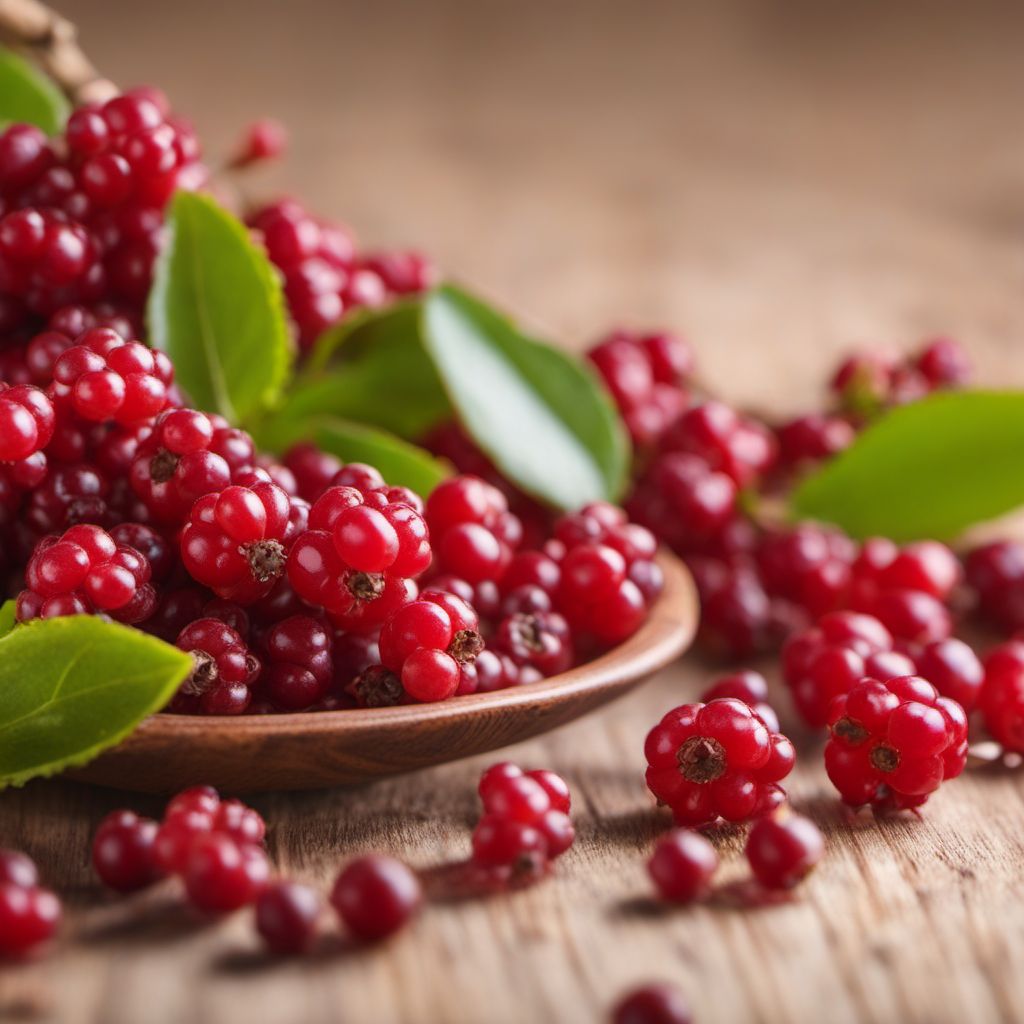
Ingredient
Schisandra berries
The Five-Flavored Wonder: Schisandra Berries
Schisandra berries are small, bright red berries with a tart and slightly sweet taste. They are known for their unique ability to provide all five flavors - sweet, sour, salty, bitter, and umami - in a single bite. The berries have a chewy texture and are often dried or used to make extracts, teas, or tinctures.
Origins and history
Schisandra berries have a long history of use in traditional Chinese medicine and are native to East Asia. They have been used for centuries to promote vitality, improve mental clarity, and support overall well-being. Today, they are cultivated in various regions around the world, including China, Russia, and North America.
Nutritional information
Schisandra berries are a rich source of antioxidants, vitamins, and minerals. They contain high levels of vitamin C, as well as various phytochemicals that contribute to their health benefits. They are also low in calories and fat.
Allergens
There are no known allergens associated with schisandra berries.
How to select
When selecting schisandra berries, look for ones that are bright red and plump. Avoid berries that are discolored, shriveled, or have a dull appearance. Dried berries should be free from moisture and clumping. Opt for organic or wild-harvested berries whenever possible to ensure the highest quality.
Storage recommendations
To store schisandra berries, keep them in an airtight container in a cool, dark place. Dried berries can be stored for up to a year, while fresh berries should be consumed within a few days. Avoid exposure to moisture or direct sunlight, as it can degrade the quality of the berries.
How to produce
Schisandra berries can be grown in temperate climates with well-drained soil and partial shade. They require a cold period during winter for optimal growth and fruit production. Regular watering and pruning are necessary to maintain healthy plants.
Preparation tips
To prepare schisandra berries, they can be eaten fresh, dried, or used to make extracts, teas, or tinctures. Fresh berries can be added to salads, smoothies, or desserts for a burst of flavor. Dried berries can be used in trail mixes, granola bars, or infused in hot water to make a refreshing tea. Schisandra extracts or tinctures can be added to beverages or used as a natural remedy.
Substitutions
There are no suitable substitutions for schisandra berries due to their unique flavor profile and health benefits.
Culinary uses
Schisandra berries are commonly used in traditional Chinese medicine to promote vitality, improve mental clarity, and support overall well-being. They are also used in various culinary applications, including desserts, beverages, sauces, and marinades. In Chinese cuisine, schisandra berries are often used to make a tonic wine called wu wei zi jiu" or added to soups and stews for their flavor and medicinal properties."
Availability
Schisandra berries are commonly cultivated in China, Russia, and North America.



